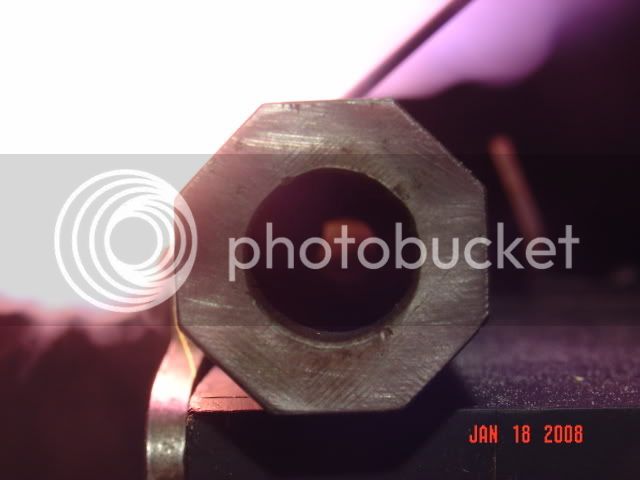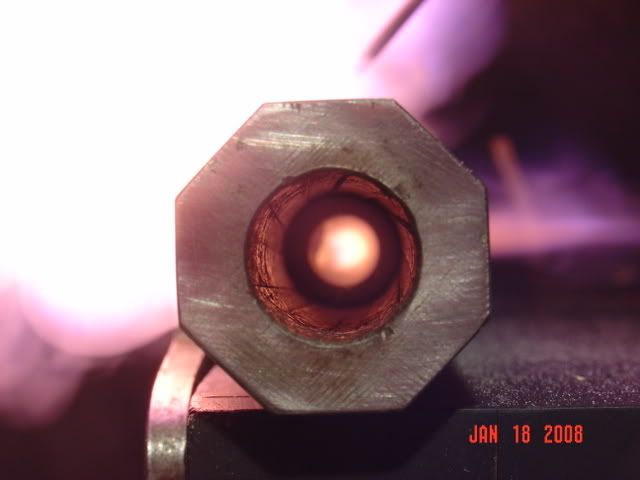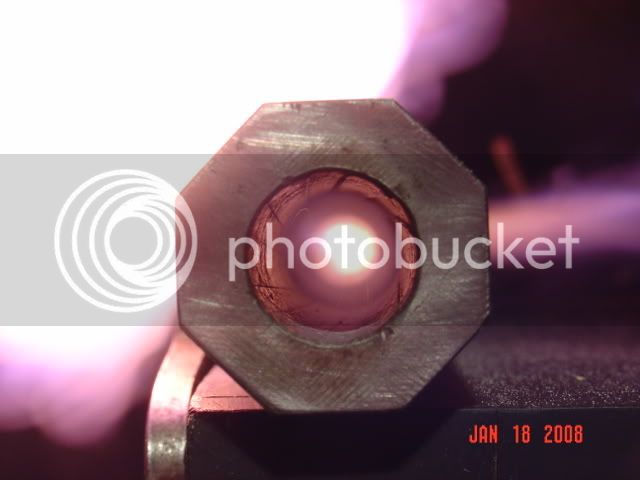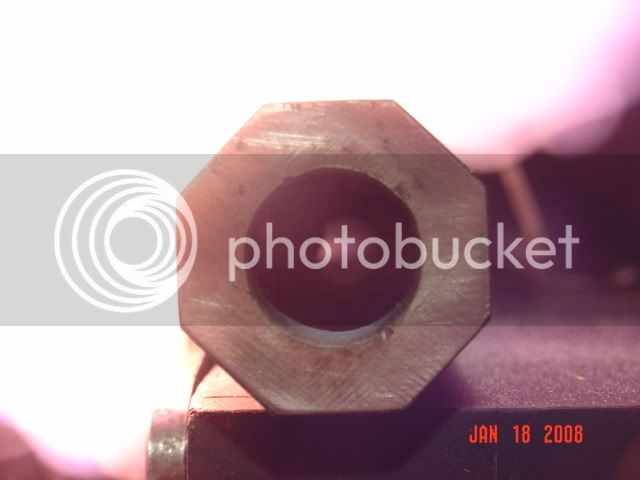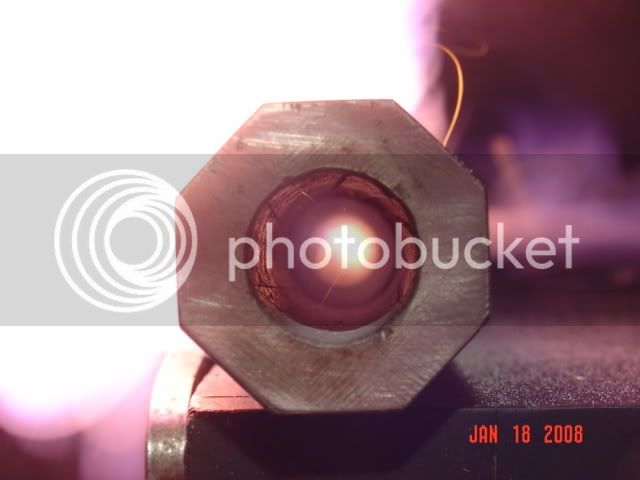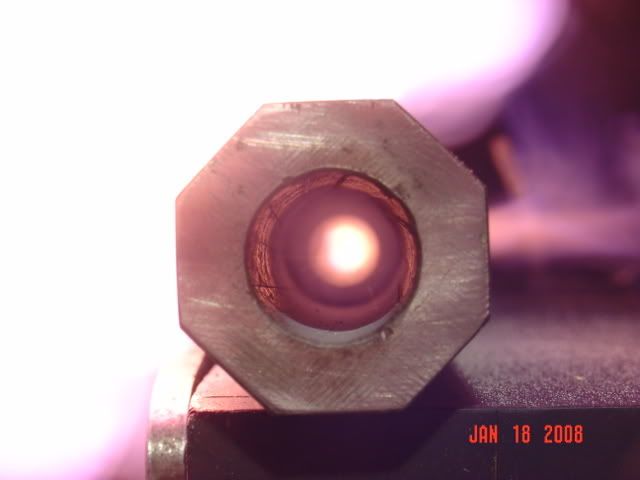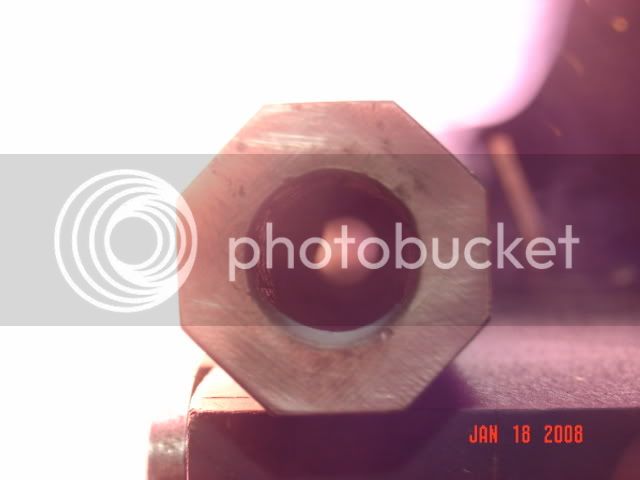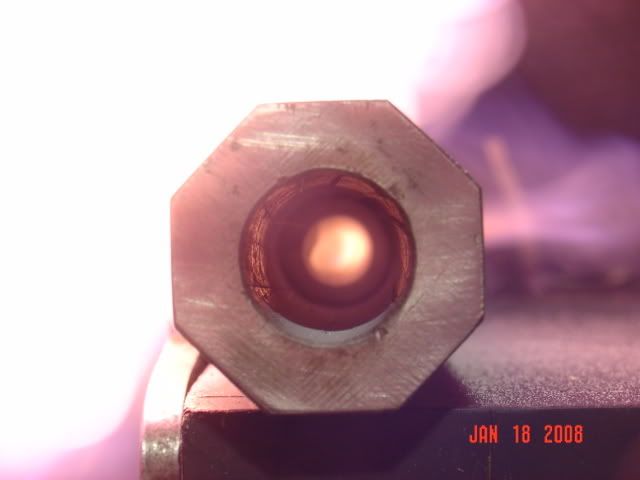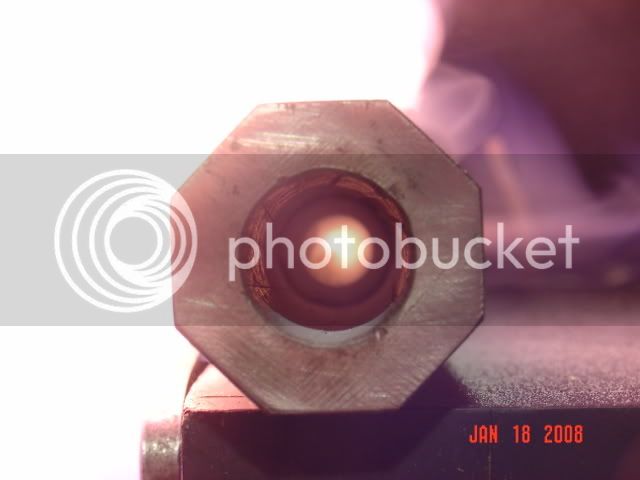OK, this pretty well exhausts my ideas about using pics to see what happens in the pan, vent, and barrel. In these stills you can make comparisons about the amount of priming and where the priming is located. It doesn’t address speed, although I’d almost be willing to speculate ”“ but won’t. The computer timing will come later, measuring time from pan ignition to gases exiting the stub barrel. I need milder weather because of the amount of smoke. I can get away with pan powder in my basement, but not barrel powder added on.
These photos use Paul’s suggestion with a dark background behind the fire. Thanks, Paul; it worked very well. The same camera methods were used, although I had a better chance to focus for distance.
Pan is primed with .5 gr Swiss away from the vent
------------
Pan is primed with .5 gr Swiss close to the vent.
(BTW the stick-like object in these first two pics is the copper wire used to ignite the pan. From here on it doesn't show - covered up by the pan ignition.)
------------
Pan is primed with .5 gr Swiss very close to the vent
------------
Pan is primed with 1.0 gr Swiss away from the vent
------------
Pan is primed with 1.0 gr Swiss close to the vent
------------
Pan is primed with 1.0 gr Swiss very close to the vent
------------
Pan is primed with 2.0 gr Swiss away from the vent
------------
Pan is primed with 2.0 gr Swiss close to the vent
------------
Pan is primed with 2.0 gr Swiss very close to the vent
Looking over these pics, the 2.0 gr charges didn't improve fire inside the barrel much as Paul and I discussed. In fact, the 1.0 gr.charges look hotter to the camera. In this test I did not do 1.5 gr because we did that earlier. I do need to say that when priming the very close charges I tried to get the powder as close to the vent as possible without covering it. When using 2.0 gr I had a powder pile higher than the hole, and used a vent pick to move part of the charge away.
------------
Apprentice Builder brings up the question:
The only fly in the ointment here is the fact that you are essentially testing an "open air system", there is no charge or clean-out screw in the barrel which I feel would seriously affect the results. ??
This is where computer timing comes in. I simply can’t deal with all the variables with the camera. When using the computer, we will have a charge in the barrel, the cleanout will be closed, and we will be dealing with numbers instead.
Regards,
Pletch





